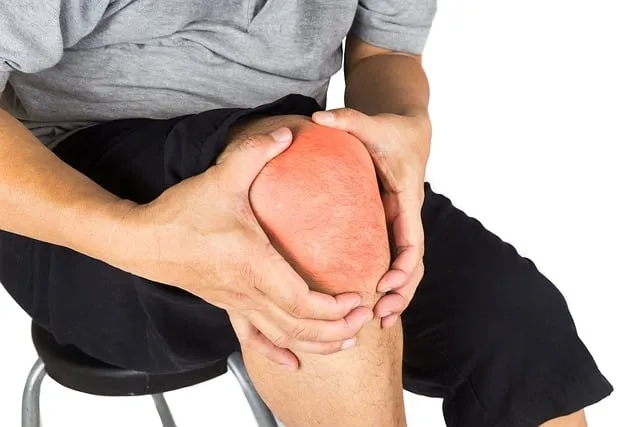Effects of high uric acid

Effects of high uric acid, Our bodies typically contain 3.4 to 7 mg/dL of uric acid in men and 2.4 to 5.7 mg/dL in women. Exceeding this level is called hyperuricemia. Increased uric acid can cause inflammation and pain in the joints. It is also called gout.
Elevation of uric acid is more common in elderly and kidney patients. But these days there is a tendency to increase this acid even among younger people. One of the reasons for this is obesity and uncontrolled eating habits.
Why can it increase?
- Eat more non-vegetarian and purine-rich foods. If the body’s kidneys are unable to eliminate enough uric acid.
- Deficiency in enzymes of uric acid metabolism. If overweight. Uncontrolled eating habits.
- Smoking or taking any intoxicants.
- Side effects of various drugs.
What’s the harm if it increases?
Heart disease and kidney stones can occur. Especially the joints of the feet may become red and swollen. The ankles may be painful, and there may be a tingling sensation when you wake up in the morning and start walking.
Foods that grow
- Liver, brain, fish roe, sea fish, beef, duck or lamb, lung, mushroom, chicken skin, crab, sea urchin, hilsa fish, meat soup.
- Lentils, chickpeas and cowpeas; Nuts, Beans, Jackfruits, Beans.
- Shatmuli, puishak, spinach, mustard greens, mulashak, patshak, kachur shak, kachurlati.
- Cruciferae—radish, radish, cabbage, tomato, broccoli, cabbage, cauliflower, saffron, eggplant.
- Foods with excess salt (packaged foods), foods fried in fatty oil, yeast or yeast-based foods.
What to eat
- Eggs, kidney beans, sour curd, milk, skinless chicken meat, fresh water fish, and yoghurt should all be consumed in moderation to meet protein needs.
- Lettuce, spinach, spinach, collard greens, pumpkin greens, greens. Kankrol, papaya, dhundul, chichinga, patol, bitter gourd, gourd, gourd etc.
- All varieties of seasonal fruits should be consumed in sufficient amounts at the same time. Make sure you’re getting enough water.
What happens if uric acid is very high?
In the intricate orchestra of our body’s biochemical processes, uric acid plays a vital role in maintaining a balanced symphony. However, when this uric acid surpasses optimal levels, a dissonant tune can emerge, leading to a cascade of adverse effects. Elevated uric acid levels, a condition known as hyperuricemia, can crystallize into needle-like formations, causing excruciating pain and inflammation in joints—a condition commonly recognized as gout. Beyond the realm of joint agony, persistently high uric acid levels may also resonate with other health issues.
Brunt as uric acid
The cardiovascular system may bear the brunt as uric acid crystals can contribute to the formation of arterial plaques, potentially elevating the risk of heart disease. Additionally, kidneys may face challenges in efficiently excreting excess uric acid, leading to the formation of kidney stones. Systemic inflammation and oxidative stress may further be fueled by elevated uric acid, acting as precursors to various chronic diseases. Consequently, keeping a vigilant eye on uric acid levels and adopting lifestyle changes can harmonize the bodily symphony, preventing the discordant consequences of high uric acid.
What are the first symptoms of uric acid?
High levels of uric acid in the body can lead to a variety of health issues, and recognizing the early symptoms is crucial for timely intervention. One of the initial indicators of elevated uric acid levels is joint discomfort, particularly in the form of sudden, intense pain in the joints. This often occurs in the big toe, a condition known as gout, and can progress to affect other joints like the ankles, knees, and wrists.
Uric Acid
Additionally, individuals with high uric acid may experience persistent fatigue and a general feeling of malaise. The formation of uric acid crystals in the joints can trigger inflammation, causing redness and swelling. Another symptom to watch for is kidney dysfunction, as high uric acid levels can contribute to the formation of kidney stones. Monitoring these early signs is crucial for addressing the root cause and implementing lifestyle changes that can help manage uric acid levels, promoting overall health and well-being.
What does uric acid do to the body?
High levels of uric acid in the body can have various effects on overall health. Uric acid is a natural byproduct of the breakdown of purines, which are substances found in many foods and the body’s cells. While low to moderate levels of uric acid are generally harmless, elevated levels can lead to several health issues. One major concern is the formation of uric acid crystals, commonly associated with conditions like gout. These crystals can accumulate in joints, causing intense pain, inflammation, and swelling.

Moreover, persistently high uric acid levels may contribute to the development of kidney stones or even kidney disease over time. Additionally, research suggests a potential link between elevated uric acid and cardiovascular problems, emphasizing the far-reaching impact of this compound on the body. Therefore, understanding what uric acid does to the body is crucial in managing and preventing associated health issues.
What is the quickest treatment for uric acid?
Experiencing elevated levels of uric acid can have profound effects on one’s health, often leading to a condition known as hyperuricemia. This surplus of uric acid in the bloodstream can crystallize and deposit in joints, causing inflammation and excruciating pain—most commonly felt in the big toe. While lifestyle modifications, such as adopting a low-purine diet and staying hydrated, are crucial in managing uric acid levels, the quest for a rapid remedy persists. The fastest way to alleviate the discomfort associated with high uric acid involves a multi-faceted approach. First and foremost, medications like nonsteroidal anti-inflammatory drugs (NSAIDs) can provide swift relief from pain and inflammation.
Medication
However, relying solely on medication may not address the root cause. Incorporating natural remedies, such as consuming tart cherry juice or incorporating bromelain-rich pineapple into your diet, can aid in reducing inflammation and promoting overall joint health. Additionally, maintaining a healthy weight and engaging in regular exercise contribute significantly to managing uric acid levels. It’s crucial to consult with a healthcare professional to determine the most effective and personalized approach for addressing high uric acid promptly, ensuring not just immediate relief but also long-term wellness.
High uric acid symptoms in females
High uric acid levels can have distinct manifestations in females, shedding light on the nuanced impact of this condition on women’s health. While commonly associated with gout, a type of arthritis characterized by painful joints, elevated uric acid levels in females can manifest in various ways. Some women may experience joint pain and swelling, particularly in the big toe, but it’s crucial to recognize that the effects extend beyond the joints. Women with high uric acid levels might also face challenges related to kidney function, as uric acid crystals can form kidney stones, leading to discomfort and potential complications.
Additionally
There’s evidence suggesting a link between elevated uric acid and cardiovascular issues in women, emphasizing the need for a comprehensive understanding of the diverse symptoms associated with this condition. As females navigate the complexities of high uric acid levels, early detection and a holistic approach to healthcare become pivotal in managing and mitigating its impact on their overall well-being.
How to reduce uric acid
High levels of uric acid in the body can lead to a variety of health issues, including the development of conditions like gout and kidney stones. When uric acid levels are elevated, it can crystallize and accumulate in joints, causing inflammation and severe pain. To mitigate the adverse effects of high uric acid, adopting lifestyle changes and dietary modifications is crucial. Hydration plays a significant role in reducing uric acid levels, as it helps flush out excess uric acid through urine. Including foods with low purine content, such as fruits, vegetables, and whole grains, can also contribute to maintaining a healthier balance.

Weight management
Regular physical activity aids in weight management and lowers uric acid levels. Additionally, avoiding alcohol and limiting the intake of purine-rich foods like red meat and seafood can significantly impact uric acid levels. Seeking guidance from a healthcare professional is essential to develop a personalized plan for managing uric acid levels and preventing associated health complications. Taking proactive steps to reduce uric acid not only alleviates immediate discomfort but also promotes long-term well-being.
What level of uric acid is Dangerous?
Uric acid, a natural byproduct of the body’s metabolic processes, is typically dissolved in the blood and excreted through urine. However, when its levels become elevated, a cascade of health concerns may follow. Determining what level of uric acid is dangerous involves understanding the normal range, which typically falls between 3.4 to 7.0 milligrams per deciliter (mg/dL).
Hyperuricemia
While variations can occur due to factors like age, sex, and diet, consistently exceeding the upper limit of this range is considered hyperuricemia and raises red flags. A uric acid level exceeding 7.0 mg/dL may lead to the formation of crystals in joints, causing the painful condition known as gout. Beyond joint discomfort, high uric acid levels have been associated with more severe complications, including kidney stones and renal impairment. Regular monitoring and consultation with a healthcare professional are crucial for individuals with elevated uric acid levels, as they can tailor interventions to mitigate risks and prevent potential long-term health consequences.
To be done
In most cases, medication is not needed to lower uric acid. However, if the joint becomes swollen and red, the doctor should be consulted immediately. If the uric acid is above a certain level, the doctor will prescribe medicine in case of kidney disease. Along with this, a diet should be developed with the advice of an expert nutritionist.






